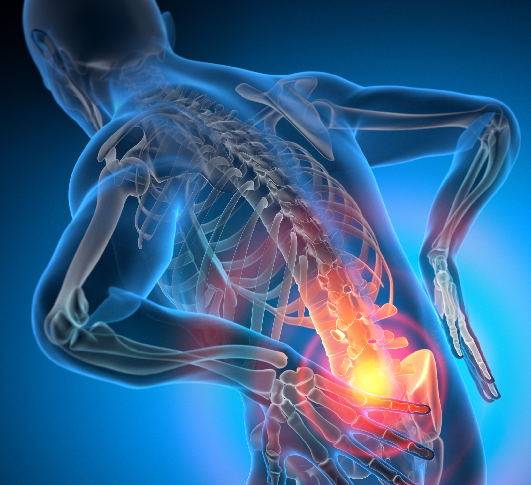A certified manual trigger point therapist explains how dry needling therapy works to relieve the trigger points causing your pain.
Posted
on Monday, April 29, 2019
 Dry needling isn’t new to physical therapy, but it is relatively new to Iowa. The technique was passed as an approved treatment in 2016 to help patients find pain relief.
Dry needling isn’t new to physical therapy, but it is relatively new to Iowa. The technique was passed as an approved treatment in 2016 to help patients find pain relief.
So, what is it and how can it help you? The Iowa Clinic, answers the five most common questions about dry needling therapy.
What is dry needling?
At its core, dry needling is a treatment to get rid of trigger points — the knots in your muscles that cause you pain. There are other forms of trigger point therapy that use massage or tools to press on your tissue. Dry needling uses tiny filiform needles precisely placed in your muscular and connective tissues to stimulate the myofascial trigger points to improve how well your muscles move and reduce your pain.
Is dry needling the same as acupuncture?
No, while there are similarities, the two pain relief techniques are very different. Both dry needling and acupuncture use filiform needles at precise points in your body.
Acupuncture was developed on the idea that illness or pain occurs when the body's vital energy cannot flow freely. So needles are placed at precise points along these interconnected pathways that map the whole body, including your head, trunk and limbs. The goal of placing needles into acupuncture points is to direct the flow of vital energy to trigger your body's healing response and restore physical, emotional and mental equilibrium.
Dry needling gets to the source of your pain — the myofascial pain caused by restrictions of your muscle tissue or the fascial layer of connective tissue that surrounds and supports the muscle. Physical therapists identify the knots or taut bands that are causing you problems and place needles with the intent of producing a local twitch response (LTR). It's the LTR that leads to the resolution of this trigger point and therefore the reduction of your pain.
What type of pain does dry needling treat?
Dry needling is mainly used for pain but it’s also an effective way to address mobility impairments resulting from scar tissue and restrictions of the connective tissue that make up your tendons. For myofascial pain, the technique is used to treat a number of areas. The most common trigger points lead to these issues:
What does it feel like?
Some people have a fear of needles, whether they cause pain or not. That’s certainly one consideration your physical therapist will take.
But dry needling doesn’t cause pain, it relieves it. The filiform needles are thin and solid so they can penetrate the skin with little-to-no sensation. Once the needle is placed and LTR is achieved, your tissue produces a unique response. Your muscles contract involuntarily as they release, which can feel uncomfortable — much like a muscle cramp. The sensation is short-lived, lasting only a few seconds. Then you start to feel the myofascial pain fade away.
What should I expect after dry needling therapy?
Soreness is common after a dry needling session. It’s similar to how you feel sore after strength training. Most often, the soreness resolves within 24 hours. You can help reduce it with ice, heat and gentle stretching.
In addition to sore muscles, you may need to help your muscles heal and restore their function. Your physical therapist may recommend that you:
- Drink plenty of water. It’s important to stay hydrated in the days following dry needling treatment. Hydration is another way to avoid or reduce sore muscles from your session.
- Exercise. Stretch, work out and continue your activities — as long as your pain doesn’t return when you do. Follow the rehab program prescribed by your physical therapist to improve your injury or condition.
- Massage your muscles. Massage is another trigger point therapy used by physical therapists. Give your taut muscles a gentle massage to continue stimulating the tissues to help resolve the soreness and pain.
Physical therapists are uniquely trained in dry needling, but it’s just one of the many tools in their toolbox. Dry needling treatments may be used as a stand-alone therapy or in addition to a variety of other treatments to relieve your pain and improve your function. Schedule an appointment with your physical therapist to diagnose your pain, identify your trigger points and get you back to feeling good.
All information offered on The Iowa Clinic website is intended to serve as general educational information only. Any content, product or service is not intended to be a substitute for professional medical advice, diagnosis or treatment. If you believe you have a medical issue, always seek the personalized advice of your physician or qualified healthcare provider.
The Iowa Clinic may provide links to outside sources for additional resources or information and is in no way responsible for the information provided by other organizations or sources. © The Iowa Clinic, 2024